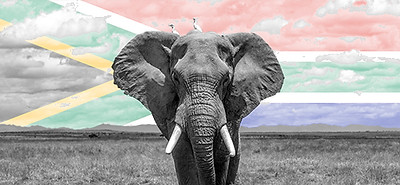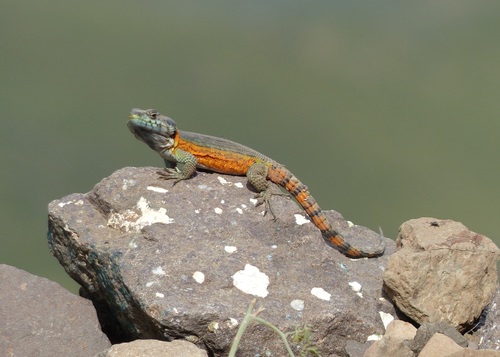VISIT the NATURAL WORLD
VISIT the NATURAL WORLD


REPTILES
Reptiles are a group of tetrapods (4-limbed vertebrate) with an ectothermic (cold-blooded) metabolism and amniotic development.
REPTILIA
latin name
400+
species in South Africa
12.000
species worldwide
2
critically endangered
11
endangered
13
vulnerable
21
near threatened
352
least concern
When it comes to the African continent, South Africa has the richest diversity of reptiles. Over 400 different species of snakes, lizards, crocodile, turtles, tortoises and chameleons live here. In fact, it has the highest diversity of tortoises in the world. You can find quite some adaptations among these reptiles enabling them to live in the extreme conditions of the dry Karoo, in the high Drakensberg mountains, the rocky coastlines or in urban environments.

There is only one species of crocodile here, the Nile Crocodile. Naturally they are found in, and around, the waters of the northeastern parts of the country. They can reach up to 5m in length and are among the most dangerous animals of Africa.

There are over 100 different snake species for you to observe. Some of which are venomous, others have the ability to constrict antelopes. The largest snake in South Africa is the Southern African Python which can reach a length of over 5m. Although common, the python is difficult to spot. In contrast, one of the smaller snakes, averaging some 18cm, is the Fornasini’s Blind Snake. You can find adders, cobras, pythons, mambas and sea snakes in most of the country. Not only on the ground, but also in the trees.

Lizards are by far the largest group within the reptiles with over 200 different species. These colorful and pointy lizards can be found all across the country. From the mesmerizing chameleons to the beautiful colored agamas, and from the large monitors to the geckos. There are even a dozen or so legless skinks. One reptile in particular to look for is the Armadillo Girdled Lizard. When it is being threatened, it bites its tail and holds on to it. By doing so it becomes a very spikey ball, making it hard for predators to eat.

When it comes to the turtles and tortoises, South Africa is well taken care of. The Cape provinces and Kruger National Park are good spots to look for them. The most widespread tortoise is the Leopard Tortoise. Five species of sea turtles are found in the South African waters. The Loggerhead Turtle and Leatherback Turtle nest on the northern beaches of Kwazulu-Natal. The Green Sea Turtle is a non-breeding resident, while the Hawksbill Sea Turtle and Olive Ridley Sea Turtle are just passing through.

Armadillo Girdled Lizard
Ouroborus cataphractus

Drakensberg Crag Lizard
Pseudocordylus subviridis

Mozambique Spitting Cobra
Naja mossambica

Bibron's Thick-toed Gecko
Chondrodactylus bibronii

Yellow-throated Plated Lizard
Gerrhosaurus flavigularis

Cape House Snake
Boaedon capensis

Cross-marked Sand Snake
Psammophis crucifer

Common Slug-eater
Duberria lutrix

Augrabies Flat Lizard
Platysaurus broadleyi

Cape Coral Snake
Aspidelaps lubricus

Cape Cobra
Naja nivea

Tropical House Gecko
Hemidactylus mabouia

Striped Sandveld Lizard
Nucras tessellata

Aurora House Snake
Lamprophis aurora

Rhombic Skaapsteker
Psammophylax rhombeatus

Southern African Python
Python natalensis

Sekhukhune Flat Lizard
Platysaurus orientalis

Rinkhals
Hemachatus haemachatus

Namib Giant Ground Gecko
Chondrodactylus angulifer

Spotted Thick-toed Gecko
Pachydactylus maculatus

Spotted Sand Lizard
Pedioplanis lineoocellata

Common Brown Water Snake
Lycodonomorphus rufulus

Mole Snake
Pseudaspis cana
